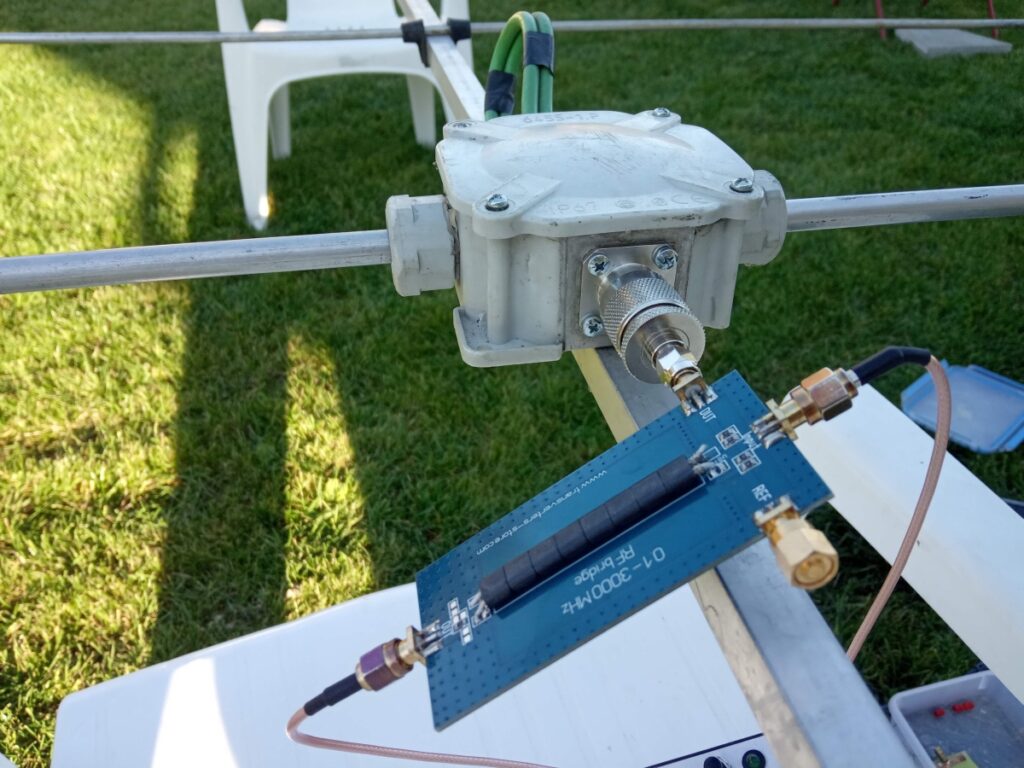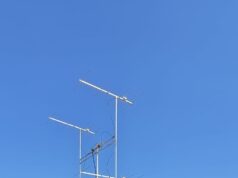It is possible to choose a different mechanical concept for portable antennas than for antennas for permanent installation. The requirements for low weight come to the fore, easy disassembly or storage.
You will read:
TIPS for portable antennas
If some parts of the antenna are disassemblable, instead of classic nuts they are more suitable wing nuts or nuts with a plastic head. Plastic head screws are also suitable. The advantage is assembly without tools and is more difficult to lose.
Vlado OK1VPZ filled an antenna box on his antennas PUR foam. It fills the space and does not allow moisture to penetrate critical parts (connections, coaxial cable matching circuits, connector connections).
Choice of yagi antenna on portable

I use YU7EF yagi with six elements. The advantage is, that it is a very high quality electrically designed antenna and at a given length it can be transported in an undisassembled state on the roof of the car (length 244 cm).
However, the disadvantage is lower gain (11,96 dBi) and the problem with the lack of symmetrization. This is partially solved by a choke approx. 3,5 thread on the coaxial cable.
Gain increase is possible by connecting antennas into antenna arrays. The two antennas provide a theoretical increase in gain of 3 decibels, but require more complex mounting, phasing or higher mast. A taller mast with a heavier load is more difficult to erect in transient conditions.
Therefore, I chose an antenna with a longer boom. The choice fell on the antenna type DK7ZB yagi with radiator in version 28 Ohm. I had some material from the past and it turned out, that the box with the radiator contains precisely this matching circuit. Gain 8 element DK7ZB is approx. 14,2 dBi.
Building a yagi antenna DK7ZB from the scratch of old antennas
The first step was a radiator box. This required replacing the connector from the SO-239 to the N-connector, replacement of the central insulator, new connection of matching circuits from parallel sections of 75-ohm coaxial cables and change of radiator length.

The antenna boom can be divided into three parts with a maximum length of approx. 150 centimeters. This length is intentional. This dimension can be inserted into the trunk of a car with the seats folded down. The advantage is, that it is not necessary to remove elements from the antenna during transport. A duralumin boom was used 15 x 15 millimeters, which is weak on such an antenna without further reinforcement. However, it is light and I had the mounts of the antenna elements for just this dimension of the boom. A tensioning cable was added for reinforcement.

The mounts are from old antennas. They allow the installation of elements with a diameter 6 millimeters by a simple slide. To make the element fit "well", I ground a hole in the location of each element into the boom.
DK7ZB yagi antenna measurement
Of course, I couldn't resist completion and measure the antenna JTGP-1033 D6 with bridge. It appears, that the antenna was manufactured exactly:

Summary of portable antenna production
Because I had all the material available, the price of the antenna is 0 €. Estimated however, the costs would be approx. 50 €: duralumin material, electric box, N-connector, PUR foam, screws, nuts, washers, element handles, tension cable.
The construction took about 5 hours. But a smarter designer with a better equipped workshop would implement the antenna even faster.
How the antenna will behave in practical operation will be seen, for a higher profit is, of course, also given by, that the radiating lobe of the antenna is narrower and the antenna will need to be directed more precisely.










